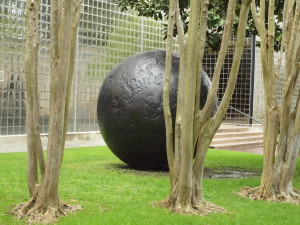
The Noguchi-designed Sculpture Garden in Houston’s Museum District activates the district’s streets which are lined with iconic museum buildings.
It’s been three years since I launched Barbara A. Campagna/Architecture + Planning, PLLC and while many things have changed, my goal to work on “greening what’s already here” continues to be met, often in places I never expected. Many people are finding new ways to integrate historic preservation and green building practices, which makes my new venture a delightful and intellectually inspiring one. This is blog five of my anniversary week.
Houston
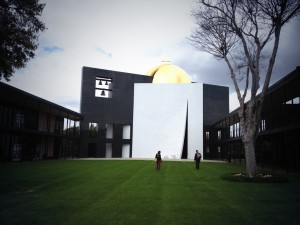
The Docomomo US Conference was held in the inspiring campus of the University of St. Thomas designed by Philip Johnson.
Houston is the largest city in Texas and the fourth largest city in the United States with over 2.1 million people. I have been invited to speak in Houston four times in the past three years and find myself enjoying and admiring Houston more and more every time. Houston was the site of the second annual Docomomo US conference this past March and I had the honor to speak on a panel about sustainability and modernism.
Passive Design and Modernism in the Sunbelt
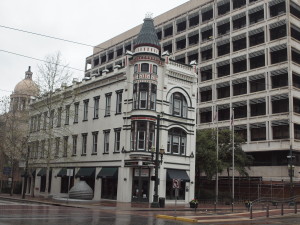
Early office buildings in Houston originally had overhangs to protect the glass from the sun – such as this one to the right. Professor Sabatino discussed the transformation of Houston’s buildings in his presentation and seminal article attached in this blog.
Our panel included Carl Stein discussing the themes from his book Greening Modernism, Professor Michelangelo Sabatino discussing passive design approaches in Houston’s modern skyscrapers and me discussing the control of humidity in modern buildings. Traditional historic buildings (built before 1945) were often built in ways that recognized the high degree of individual controllability that buildings that respond to their climate and region can have. Traditional and vernacular buildings, constructed before fossil fuels were in widespread use, required active participation of building occupants to manage and control their comfort, health and productivity. But how do you control interior environments when the windows do not open, the curtain wall is sealed or there is no mechanical ventilation? This topic explored sites across the country that encounter high humidity – from the summers in the Midwest to the summers in the South East. Buildings such as Philip Johnson’s Glass House, Mies van der Rohe’s Farnsworth House, Frank Lloyd Wright’s Pope-Leighey House, an O’Neill Ford house in San Antonio and NCPTT’s headquarters in Natchitoches, LA were reviewed. These presentations were videotaped and will be posted on this site once they are up.
Remaking the of Epitome of Suburban Sprawl Into an Urban Oasis
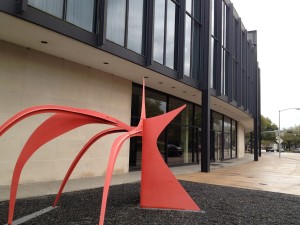
This wing of Houston’s Museum of Fine Arts is the only museum building in America designed by Ludwig Mies van der Rohe. His classic glass box design requires full curtains lining the interior curtain wall to allow the installation of art work.
Something’s happened to downtown Houston in the past five years. A light rail opened. Vacant downtown office buildings have become lofts and boutique hotels. A Brutalist theatre is receiving a LEED Gold makeover. The museum district is a real neighborhood which can be reached from downtown for $1.25 on the light rail. The museums include buildings by Mies van der Rohe (a wing of the Museum of Fine Arts, the only museum he designed in America), Rafael Moneo (another wing of the Museum of Fine Arts), Venturi Scott-Brown and Associates (Children’s Museum), Ralph Appelbaum Associates (Houston Holocaust Museum), a Noguchi-designed Sculpture Garden, and Gunner Birkarts (Contemporary Arts Museum). A new Steven Holl museum is also in the works.
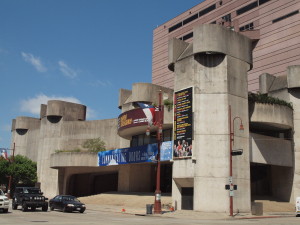
The Alley Theatre, a Brutalist landmark in downtown Houston designed by Ulrich Franzen, is undergoing a LEED Gold Rehabilitation.
Just a 10 minute walk towards downtown is a secondary Museum and university district called Midtown with masterpieces by Renzo Piano (the Menil Collection and the Cy Twombly Gallery) and Philip Johnson (University of St. Thomas and Rothko Chapel). The Docomomo US Conference was held at the University of St. Thomas and the Menil Collection, inspiring places to discuss modernism.
And if you’d like to “subscribe” or follow my blog, True Green Cities, please sign up through the “Subscribe” button at the bottom left of this page. You’ll receive a daily recap when new blogs are posted. Or Sign up for the Feed.
